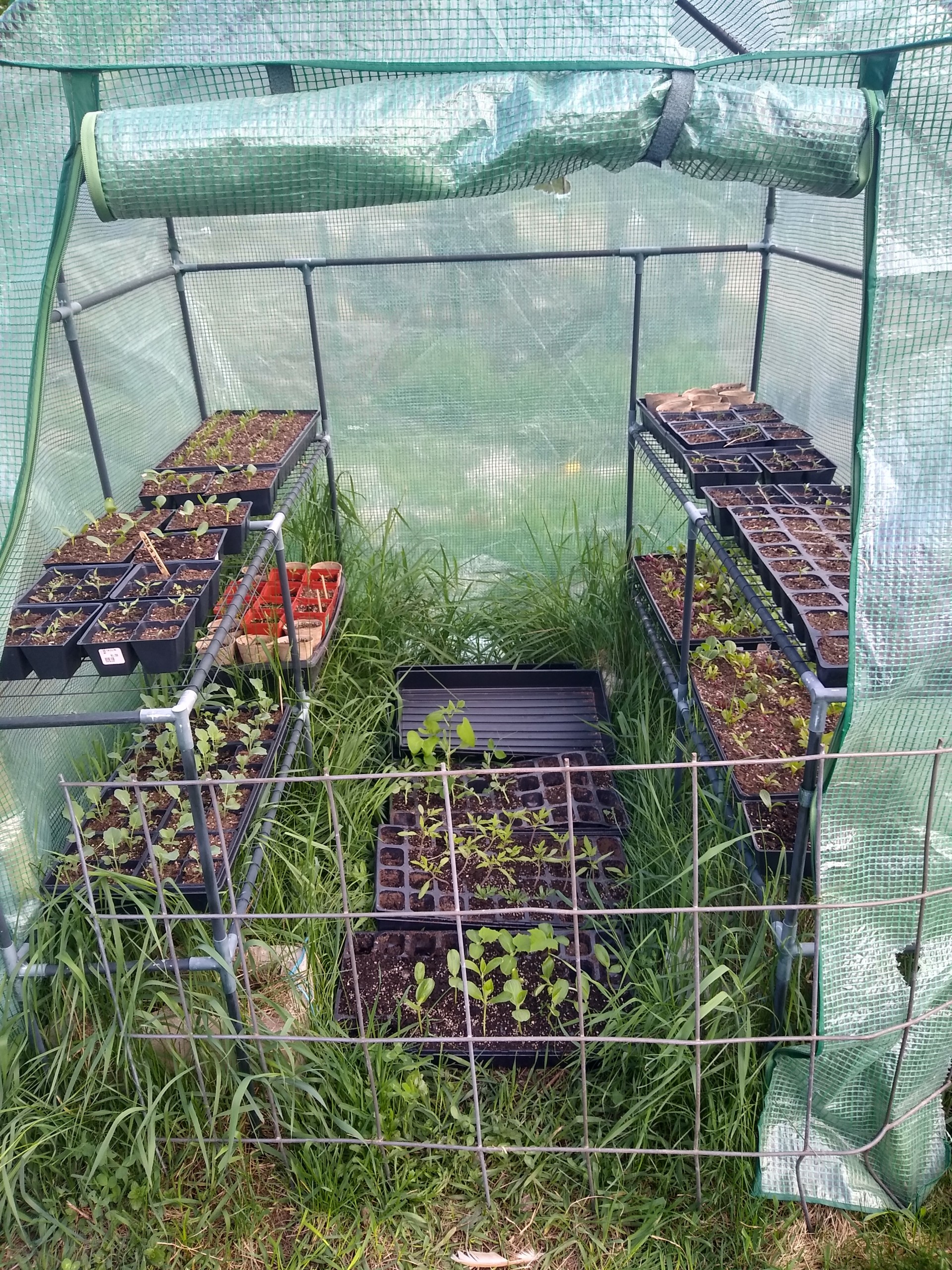sheep
Our sheep program is in transition as we are in the process of acquiring new breeding stock to improve our current herd. We are purchasing 3 purebred Katahdin sheep (two ewes and a ram). Katahdins are a hair breed of sheep, they do not produce wool and naturally shed their hair in the summer, eliminating the need for shearing.

They are solely a meat breed, and besides having extremely high-quality mild-flavored meat, they are hardy animals with excellent mothering abilities and calm temperaments. Our herd currently consists of only two mixed conventional breed ewes. The Katahdin genetics will greatly improve our future lamb crops.
In terms of management, our sheep complement our cattle in the pasture. Each species has a slightly different pallet in terms of forage preferences. Cattle will head straight for the lush pasture grasses, while the sheep enjoy (along with the grass) the shrubs, young trees, multi-floral rose bushes, goldenrod, etc. that can so quickly completely eclipse the view of our beautiful stone walls. Between the cattle and the sheep, all forage produced by our pastures is utilized and the land is fertilized evenly and extensively.

POULTRY
We raise 1-2 batches of 100 broiler chickens a year, a batch of turkeys for Thanksgiving, and have recently begun experimenting with meat ducks. We also keep around 40 layer hens to supplement a large percentage of the eggs used in the school kitchen, and a few guinea hens and geese.
We have two different breeds of layer hens, Rhode Island Reds, and Plymouth Barred Rock. Both are heritage dual-breeds known for high-quality egg and meat production, hardiness, and docile temperaments. One of the favorite farm chores among the students is searching for eggs, and the delicious brown eggs are always a hit on the breakfast table.
We raise our poultry in a truly free-range management system. And when we say “free-range” we do not mean, “not in a cage, just in a barn” or even, “not in a cage or barn, but in a fenced-in run” we mean free-range. In the morning we open the doors to their pens and they go. At night they get herded back into sleep until the following morning.
This management strategy does have its downsides: an increase in labor (the extra work of herding the poultry in for the night and, occasionally, off of lawns, streets, gardens, etc.), increased opportunity for predation, and (for the meat birds) slower weight gains. However, we feel the price is small compared to what is gained in terms of the quality of life of our birds, their overall health, and the quality of the meat and eggs they produce. The poultry often occupies the same pasture space as the cows, pigs, and sheep. They help with parasite control by eating larva and grubs, and fertilization through their own manure, and by scratching through manure left by the other animals, spreading it more evenly and beneficially.
OTHER FARM ANIMALS
The current Farm Manager has a few pet Nigerian Dwarf goats on campus who, when they decide to tolerate fences, spend their time with the sheep. Students help with the care of the goats and seasonal milking. He also now keeps a few rabbits on campus as well.


Garden
A new feature on the farm, the ¼ acre organically managed garden serves as another opportunity for students to get their hands dirty and develop an understanding and connection to the food on their plates. It also serves as a resource for supplementing our pigs’ diets. We mostly planted root crops, specifically lots of potatoes, but also had a variety of delicious veggies for summer campers, staff, and students to munch on.
In addition to the garden, we have a variety of apple trees growing around campus.

